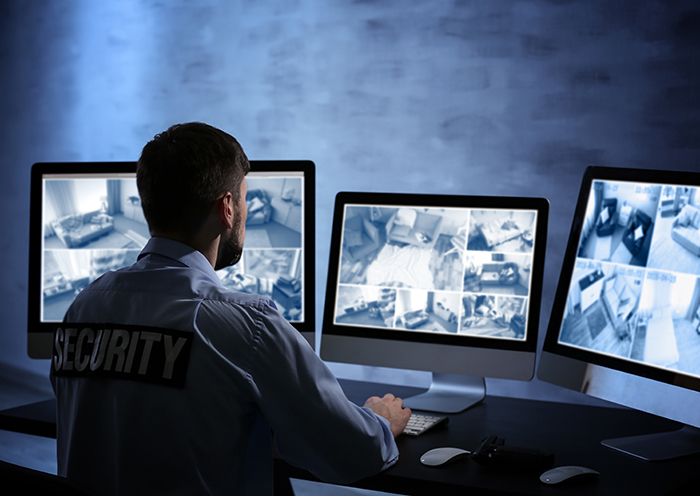The Video Analytics Primer for Homeland Security

Proactively and productively protecting what matters most
When it comes to homeland security, video analytics is an invaluable tool to aid in gaining situational awareness and advancing post-event investigations. And as bad actors become increasingly sophisticated in their schemes, security and military professionals should look to video surveillance software to supplement their traditional and on-the-ground methods of obtaining intelligence.
Alerting for situational awareness and changes in the environment
In the event of a terrorist threat or security breach, it is not enough for law enforcement to respond to an event, they must do so quickly and with as much information as possible. In ideal situations, security professionals should be proactive and prepared. Video surveillance analytics enables them to do just that.
Having a deep understanding of the environment and awareness of evolving situational changes enables responders to be proactive and react quickly. Video analytic software can be configured to provide real-time, rule-based alerts based on a variety of video object classifications, such as faces and license plates of interest (when a face or plate match is detected in video) or when a person or object is detected entering an area of interest (for instance, because the area is not meant to be accessed).
Real-time alerting enables law enforcement to be proactive when there is a known threat, based on sophisticated rule configurations, so that notifications can be triggered for very criteria or behaviors. When law enforcement or border security knows in advance about potential activity, they can configure alerts to be triggered when particular relevant suspects or behaviors are detected, so a human operator can assess the situation as it’s evolving and determine how to respond – if at all.
Similarly, alerts can help security professionals understand changes in the environment that might indicate unknown threats. For instance, alerts can be set when there is behavior out of the ordinary, such as loitering near sensitive security areas, trespassing on military or law enforcement property, and accessing off-limits buildings. This allows the relevant authorities to be notified, assess the situation, and make real-time decisions about responding to keep citizens and property protected in the event of a true threat.
By analyzing video data that has aggregated over time to determine normal trend data, operators can benchmark normal activity – which helps define the alerting logic to proactively identify and respond to abnormal and unexpected behavior. Transportation venues, for instance, are typically high security risk, whether it be an airport, train station, or bus terminal. Not only are they targets for terrorist activity, but they serve as a way for bad actors to cross borders. To keep civilian transport safe, security teams can leverage video analytics to monitor for persons of interest or suspects and receive critical notifications in time-sensitive situations to drive real-time response.
Post-event investigation
When incidents can’t be prevented ahead of time, security forces must have the ability to swiftly understand the events that transpired and investigate malicious activity. Traditional video investigation methods can take time; however, video analytics can accelerate the review of hours of video: by leveraging AI-driven video analytics, which identifies, classifies and indexes objects in surveillance video, video can be searched and filtered to easily pinpoint relevant evidence and focus the video investigation.
The technology thus enables security forces and law enforcement to carefully review incidents in their immediate aftermath. For example, surveillance footage can be quickly reviewed to identify when a blue pickup truck used by the suspect came into frame and in which direction it traveled. This information can help investigators determine where they should focus their efforts in building a case and reveal important findings critical to solving the investigation.
Aggregating sources of intelligence
Without question, video data is one of the most valuable resources that security professionals can leverage to aid in gaining situational awareness, being proactive in response to incidents and accelerating investigations. That data can, and should, be aggregated alongside other means of intelligence and analyzed as a way of taking investigations to the next level. Ultimately, aggregated data from multiple sources can help homeland security broaden their situational awareness and understanding of movement patterns, crowding, vehicular traffic, bottlenecks and more.
This information helps to set a baseline so that when unexpected scenarios or rapid changes in the environment happen, security professionals are appropriately alerted. By understanding typical volumes of vehicle traffic at the border crossing, border patrols can be attuned to unexpected spikes and lulls in travel, but also be better prepared and more efficiently staffed to meet expected peaks in traffic. They can plan proactively for high traffic seasons and investigate unusual events more strategically, with more comprehensive intelligence about border crossing activity and trends derived from video.
Furthermore, by aggregating video data and analyzing it along with critical data from other intelligent sensors and smart infrastructure, law enforcement and security forces can develop deeper layers of intelligence and situational awareness that can inform their strategic decision-making when it comes to protecting citizens and institutions, but also enable other government services to leverage findings to serve the community in other ways, such as identifying and building missing infrastructure, understanding opportunities to support local businesses and tourism, and deepening trust between law enforcement and residents through community-policing efforts.